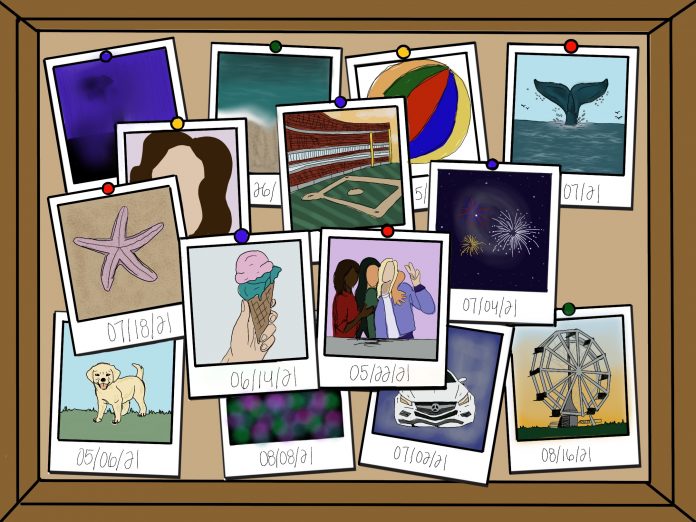A few months into the pandemic, I texted a close friend about Instagram. Virginia had a stay-at-home order and classes were over, so what else was there to think about, I guess? When it was no longer safe to see our friends and family in person, all eyes turned to digital spaces. Instagram became one of the platforms that no longer served as an extension of ourselves, but what we relied on to tell our stories. From the confines of our own homes, we became our online depictions of ourselves — every post and comment a way of signaling to our communities that we were alive, that we were still interacting with the world around us, no matter how different it looked.
But something changed as a result.
We noticed the Facebook-ification of Instagram, and I don’t mean the fact that Mark Zuckerberg and co. acquired the photo-sharing app back in 2012. I noticed that people in my age range, college-age students from their late teens to mid-twenties, started posting less and less about their everyday lives and only posted during those more ‘grammable moments — football games, weddings, birthdays, brunch — what happened to pretty leaf Instagram? (Pretty leaf instagram: the idea that you could see something cool, take a picture of it because you think it looks cool, like a pretty leaf, and just put it on Instagram because why not).
Maybe I just live in the past, back to a time where we were in middle school and shared a little too much on Instagram. But I miss the innocence and the fun of that. I’ve always been a big proponent of taking pictures and videos of every moment — the good, the bad, the mundane. We’ve seen how the pandemic has warped our sense of time. I’m still coming to terms with the fact that I left for spring break sophomore year, the world changed, and suddenly I am gearing up for the final moments of my undergraduate career.
But in the past year, when social events were put on hold and there were no longer ‘grammable moments to share besides those of years’ past to both reminisce and look forward to a future where we could hug and dance and eat and be merry with our friends again, all we had were photo dumps.
I think it’s naive at this point to imagine a life without social media. As someone who was raised on these apps, I understand (and have experienced and studied) how social platforms have forever changed the way that children develop and the way that they socialize. I know social media has brought a lot of evil into our world, and it’s even changed the way some of us pick out our clothes for the day, decide what to do, who to hang out with — the list goes on.
However, I am also forever thankful for the ways that social media has given me a glimpse into the lives of people I would otherwise only know as the girl who sits two rows behind me in my government class, or the guy who was in my voting bloc one year at a high school Model United Nations conference. Instead of seeing curated and edited posts of friends at a party or at brunch (not that I am hating on the occasional brunch ‘gram), I’ve enjoyed scrolling through photo carousels of haphazardly-thrown-together midnight snacks and blurry shots from your backyard or your dog’s face at a funny angle. I see people’s priorities in their posts. I see their heart and soul in the “mundane” (but not so mundane for them) and random moments they choose to share with the world; the small insights and glimpses into lives I would know nothing about otherwise.
I understand the irony in my bashing “curated” content despite the fact that photo dumps are to an extent curated, as well — but I think there’s some fun in that. Out of all the photos you took this summer, why did you choose the 10 that you did for this post? I’ve especially loved how this summer has been particularly inviting for this kind of content. The optimism that vaccines have brought mixed with a (though somewhat misguided, somewhat premature, but understandable) country-wide itch to move past lockdowns and mask mandates has made people appreciate life more. We’ve realized that life is too short to see a pretty sunset, take a photo of it, and not share it because some of us have not yet signed on to the #MakeInstagramCasualAgain movement. I hope people in all walks of life continue to post their cut-up fruit and mirror selfies at HomeGoods and blurry shots of their friends.
I come to you, as a person who is so perpetually online and rolls their eyes when people become preachy about social media use, to say that this is one of the best social media trends to come from what has been a dark time for us all. Not only do photo dumps encourage us to live in the moment more, but they allow us to preserve what would otherwise be forgotten pieces of time, and I think we will all want to remember how we felt in weird times like these.
Nina Raneses ’22 is a government major and serves as The Flat Hat’s copy chief. She is also a copy chief for Flat Hat Magazine and writes for the APIA studies program’s journal, Art & Hatsuye. On campus, she also works as a resident assistant and in the Cohen Career Center. Email Nina at caraneses@email.wm.edu.


[…] es la razón de este fenómeno virtual? De acuerdo a un artículo en The Flat Hat, el tiempo en que los photo dumps se volvieron populares fue durante los inicios del confinamiento. […]